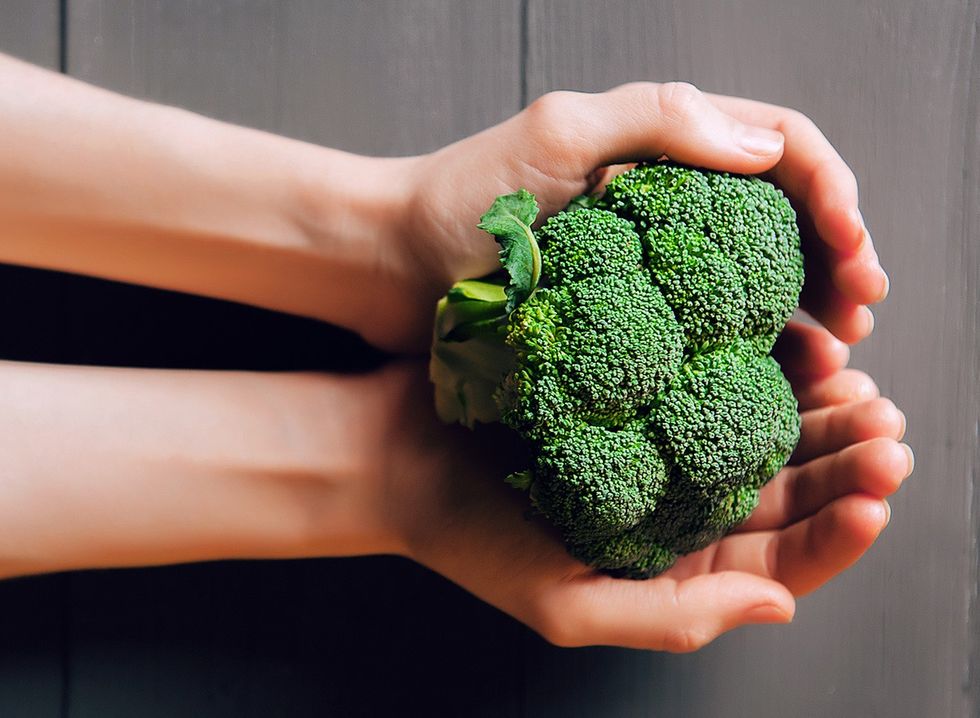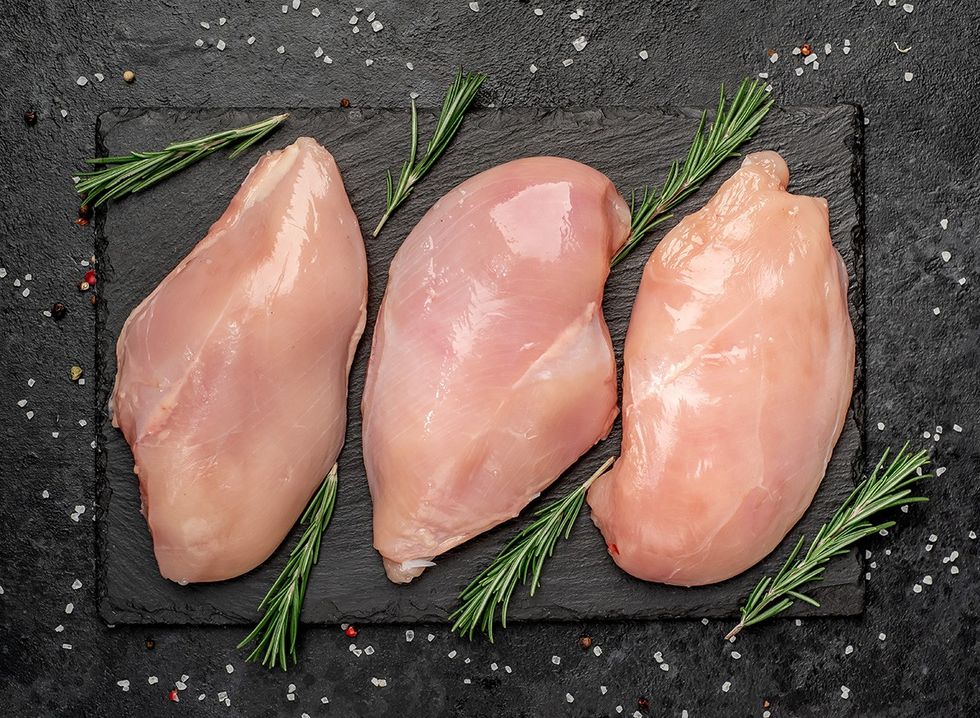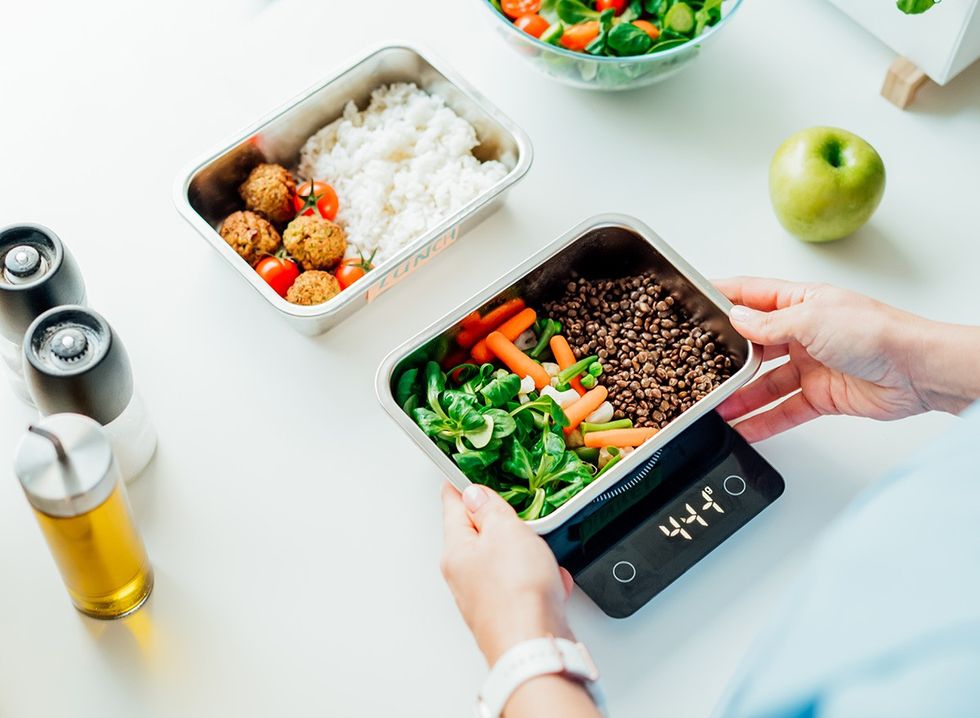Abdominal fat is not only uncomfortable but also linked to several concerning health conditions such as diabetes and heart disease—so getting rid of it should be a priority. “A few small changes in your lifestyle can make a big difference and reduce your waist size,” dietician Maya Aboukhater tells Bupa UK. “Try to reduce your portion sizes and cut out sweet treats and alcohol. Also, increase the amount of physical activity you do and eat more fruits and vegetables. Try to do some strength training exercises at least twice a week.” Here are key superfoods that can help you fight the battle of the bulge.
Yogurt

Research from the University of Tennessee shows that yogurt encourages fat-burning. "Not only did yogurt help the study participants lose more weight--the average weight loss was 13 pounds--they were about twice as effective at maintaining lean muscle mass," says Michael Zemel, PhD. "This is a critical issue when dieting—you want to lose fat, not muscle. Muscle helps burn calories, but it is often compromised during weight loss."
Fish

Fish is a high-quality protein which can help with weight loss. “Most fish are generally considered a lean source of protein,” dietitian Miriam Troutner tells UnityPoint Health. “This technically means it contains less than 3 grams of fat per ounce or less than 10 grams of fat in 100 grams portion. Beware, because fish is such a lean source of protein, many recipes add additional fat in cooking or serving to enhance the flavor. Save fried fish for special occasions and limit creamy sauces if you eat fish routinely.”
Eggs

The fat and protein in eggs make them a great snack or meal. “The nutrient profile of eggs also yields itself to provide greater satisfaction at a meal, meaning it can help with satiety, which is great for those trying to lose weight,” Rachel Bunch, RD, LD, tells Parkview Health. “Eggs have been shown to suppress appetite and decrease plasma ghrelin levels. Ghrelin is a hormone responsible for appetite stimulation.”
Soybeans

“Soy is a nutrient-dense source of protein that can safely be consumed several times a week, and probably more often, and is likely to provide health benefits,” says Harvard Health. “Especially when eaten as an alternative to red and processed meat.”
Green Tea

Green tea contains no calories and can help burn fat. “Tea itself is great because it has antioxidants,” dietitian Teresa Fung, Sc.D. tells TODAY. “You’re drinking fluids, and when we are getting our fluids from tea, hopefully we are not getting it from soda.”
Avocados

Studies show avocados can help with weight loss. “Researchers added half of an avocado to the subjects’ lunch meals and found that they felt fuller over a longer period of time and had less of a desire to eat,” Surgical Oncologist Dr. Mark Reeves tells Loma Linda University Health. “Not only that, but their insulin levels decreased after the meal.”
Berries

Berries are low-sugar and packed full of antioxidants. “No matter the variety of foods you eat, healthy diets should try to incorporate five servings of fruit and vegetables each day, because studies have shown that this can improve overall health and lower the risk of serious health problems, such as obesity or type 2 diabetes,” Rachel Lander-Canseco, RD, tells Keck Medicine.
RELATED: 15 Quick Ways to Lose Body Fat Percentage in a Week
Almonds

Research from the University of South Australia shows almonds can help reduce appetite. “We found that people who ate almonds experienced changes in their appetite-regulating hormones and that these may have contributed to reduced food intake (by 300kJ),” says Dr. Sharayah Carter from UniSA's Alliance for Research in Exercise, Nutrition and Activity (ARENA). "Almonds are high in protein, fiber, and unsaturated fatty acids, which may contribute to their satiating properties and help explain why fewer kilojoules were consumed."
Chili Peppers

Chili peppers contain capsaicin, which is shown to help boost metabolism and burn fat. “Capsaicin helps increase your core temperature, increase metabolism, and helps burn calories faster,” clinical dietitian Haley Robinson tells Piedmont Health. “Research has shown that it could increase your metabolism by up to 5 percent.”
Broccoli

Broccoli is a filling, satiating vegetable packed with antioxidants. “Broccoli is a member of the cruciferous vegetable family,” says UnityPoint Health. “It's known for its high water and fiber content, which is a great combination to help you feel full.”
Go Low-Carb

A low-carb diet could help boost fat-burning. “When Johns Hopkins researchers compared the effects on the heart of losing weight through a low-carbohydrate diet versus a low-fat diet for six months—each containing the same amount of calories—those on a low-carb diet lost an average of 10 pounds more than those on a low-fat diet,” says Johns Hopkins Health. “28.9 pounds versus 18.7 pounds.”
RELATED: The Daily Walking Plan That Helped Me Shed 60 Pounds
Don’t Drink Sugar

Avoid sugary sodas to help with fat loss. “Switching from sugar-sweetened beverages to diet is a step in the right direction for most people with excess weight,” registered dietitian David Creel, PhD, tells the Cleveland Clinic. “But we’re still learning about the long-term effects of different low-calorie sweeteners — like the ones found in diet soda — on things like taste preferences, cravings, gut bacteria, and insulin resistance, a precursor to Type 2 diabetes.”
Oatmeal

Oatmeal is a great snack or breakfast choice. “This is a powerhouse full of fiber that will not only help you last through the morning without hunger but will slow down the release of sugar into your bloodstream,” says UnityPoint Health. “Start the day with a hot bowl of oatmeal in the morning or make overnight oats the night before in a mason jar for an on-the-go breakfast.”
Chickpeas

Chickpeas are versatile and delicious. “While naturally low in saturated fat, chickpeas are nutrient-dense,” dietitian Caitlin Terpstra tells Mayo Clinic Health System. “They provide nearly 20 grams of protein in a ½-cup serving and 5 grams of dietary fiber. Chickpeas also are a source of folate, iron, vitamin C and phosphorus.”
RELATED: 20 Proven Tips to Lose Weight with the 12-3-30 Walking Method
Water

Hydration has a significant impact on weight loss. "Thirst, which is triggered by mild dehydration, is often mistaken for hunger by the brain,” internist and board-certified physician nutrition specialist Melina Jampolis tells Johns Hopkins. "You may be able to decrease appetite by drinking water if you are, in fact, low in water, not calories… We're not certain of the mechanism, but mild dehydration decreases lipolysis, which may be due to hormonal changes.”
💪🔥Body Booster: Fat burning affects the whole body, which includes abdominal fat.








 1. Hydrate the Right WayShutterstock
1. Hydrate the Right WayShutterstock AvocadoShutterstock
AvocadoShutterstock Leafy GreensShutterstock
Leafy GreensShutterstock EggsShutterstock
EggsShutterstock Spice Up Your Food with Healthy CondimentsShutterstock
Spice Up Your Food with Healthy CondimentsShutterstock Shutterstock
Shutterstock Shutterstock
Shutterstock Nuts and SeedsShutterstock
Nuts and SeedsShutterstock Regular YogurtShutterstock
Regular YogurtShutterstock Kevin’s Natural Foods Cilantro Lime ChickenShutterstock
Kevin’s Natural Foods Cilantro Lime ChickenShutterstock Amp Up Your Protein IntakeShutterstock
Amp Up Your Protein IntakeShutterstock Shutterstock
Shutterstock Prebiotic Foods: OatsShutterstock
Prebiotic Foods: OatsShutterstock Shutterstock
Shutterstock Shutterstock
Shutterstock 5. Green TeaShutterstock
5. Green TeaShutterstock Shutterstock
Shutterstock Step Five: Stay ConsistentShutterstock
Step Five: Stay ConsistentShutterstock








 Jeremy Ethier/YouTube
Jeremy Ethier/YouTube Shutterstock
Shutterstock Shutterstock
Shutterstock
 Jeremy Ethier/YouTube
Jeremy Ethier/YouTube
 Shutterstock
Shutterstock Shutterstock
Shutterstock Shutterstock
Shutterstock Shutterstock
Shutterstock Shutterstock
Shutterstock Shutterstock
Shutterstock Shutterstock
Shutterstock Shutterstock
Shutterstock

 Shutterstock
Shutterstock Shutterstock
Shutterstock Shutterstock
Shutterstock Shutterstock
Shutterstock Shutterstock
Shutterstock Shutterstock
Shutterstock Shutterstock
Shutterstock Shutterstock
Shutterstock Shutterstock
Shutterstock Shutterstock
Shutterstock Shutterstock
Shutterstock Shutterstock
Shutterstock Shutterstock
Shutterstock Shutterstock
Shutterstock Melissa Pfeister
Melissa Pfeister

 Shutterstock
Shutterstock Shutterstock
Shutterstock Shutterstock
Shutterstock Shutterstock
Shutterstock Shutterstock
Shutterstock Shutterstock
Shutterstock Shutterstock
Shutterstock Shutterstock
Shutterstock

 I'm a Nutritionist and These 9 High-Protein Snacks Keep My Clients Full While Losing 50 Pounds
I'm a Nutritionist and These 9 High-Protein Snacks Keep My Clients Full While Losing 50 Pounds
 Shutterstock
Shutterstock 2. Processed FoodsShutterstock
2. Processed FoodsShutterstock Shutterstock
Shutterstock Shutterstock/Prostock-studio
Shutterstock/Prostock-studio Shutterstock
Shutterstock Pro TipsShutterstock
Pro TipsShutterstock Shutterstock
Shutterstock Shutterstock
Shutterstock Shutterstock
Shutterstock Shutterstock
Shutterstock Don’t Drink as Much AlcoholShutterstock
Don’t Drink as Much AlcoholShutterstock Most Women on GLP-1s Are Making a Few Common MistakesShutterstock
Most Women on GLP-1s Are Making a Few Common MistakesShutterstock Soda and Sugary DrinksShutterstock
Soda and Sugary DrinksShutterstock Shutterstock
Shutterstock Eat BreakfastShutterstock
Eat BreakfastShutterstock And Improve Insulin SensitivityShutterstock
And Improve Insulin SensitivityShutterstock Shutterstock
Shutterstock The Drugs Mimic the GLP-1 Hormone Naturally Produced by the BodyShutterstock
The Drugs Mimic the GLP-1 Hormone Naturally Produced by the BodyShutterstock 3. Deep-Fried ItemsShutterstock
3. Deep-Fried ItemsShutterstock